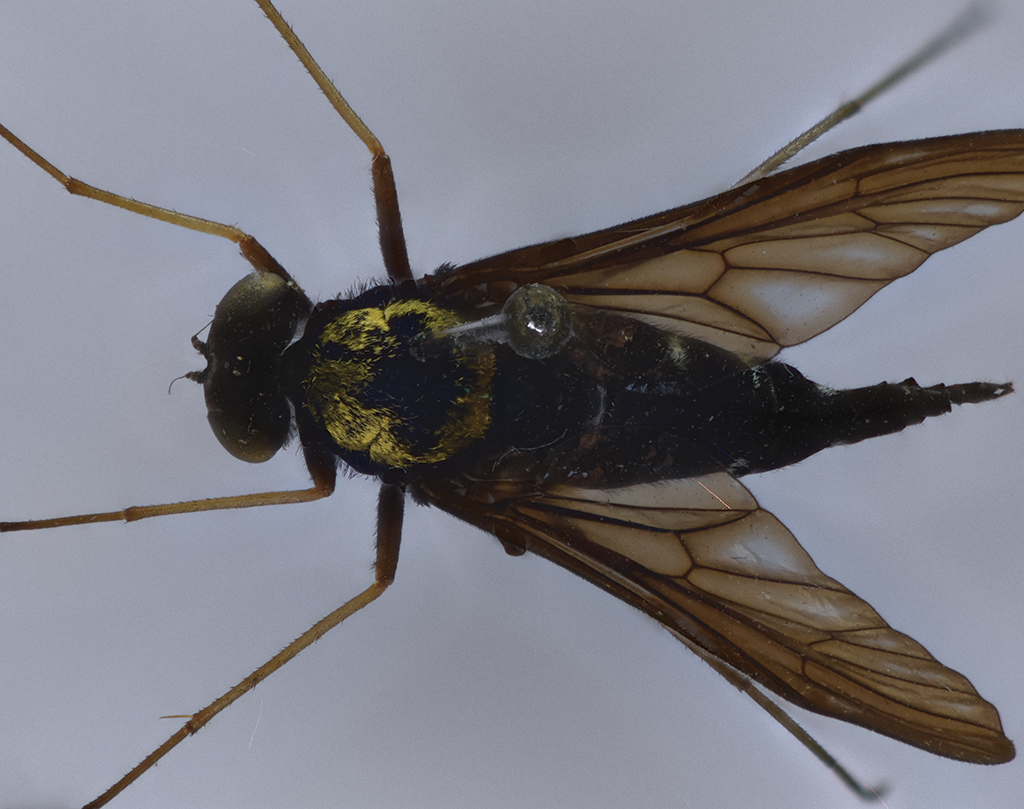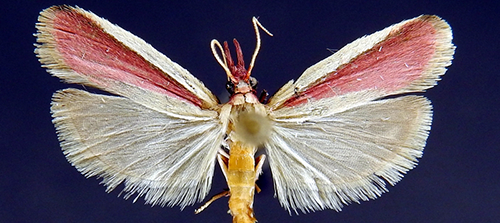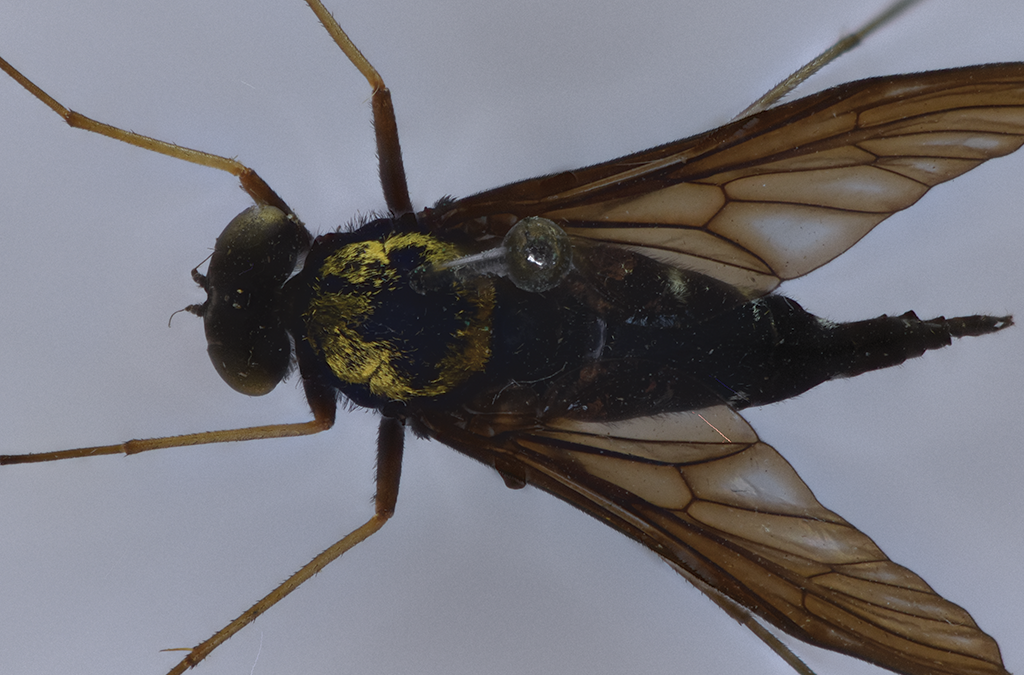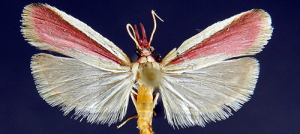We next turn our attention to the insect order Diptera (the true flies). I plan to spend a number of weeks on these insects. Obviously you are familiar with the blood suckers (such as mosquitos, deer flies, horse flies and black flies). There are roughly 120,000 described species of Diptera worldwide.
Our insect of the week is Chrysopilus thoracicus (Fabricius, 1805) [DIPTERA: Rhagionidae]. Commonly called the golden backed snipe fly. Yes, snipe fly is a common name. The genus name translates to golden hair (hence the name). Most members of this family have long legs and rounded heads. Adults are found throughout eastern North America (including central Illinois). They are often observed resting on low vegetation in deciduous woodlands. Adults typically appear in late spring and early summer (May and June). Curiously, although they are readily visible as adults, nothing is known about the life cycle of this species. If you are looking for something to study, this would be a good candidate. Although that can be said about many species of insects in central Illinois. It is thought larvae are predators and live in rotting wood or moist soil, but that is mostly conjecture at this point in time.
The specimen shown in this stacked photograph was collected by our former member, Gordon Adams in June, 1969 (Peoria County).



